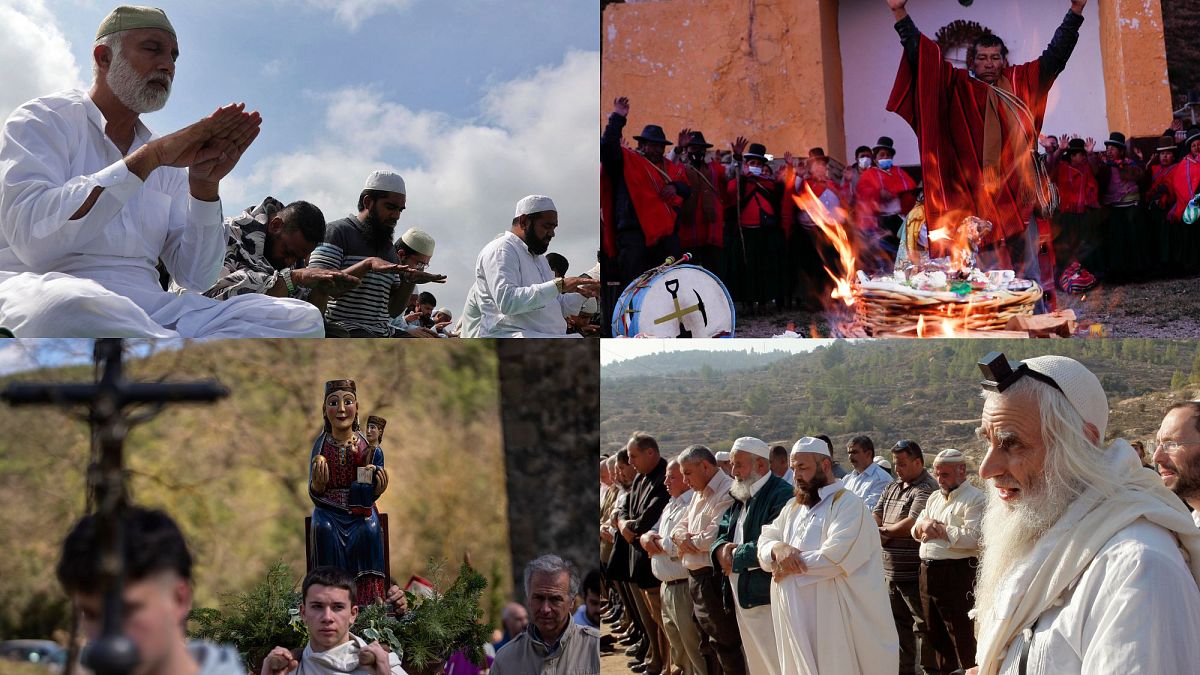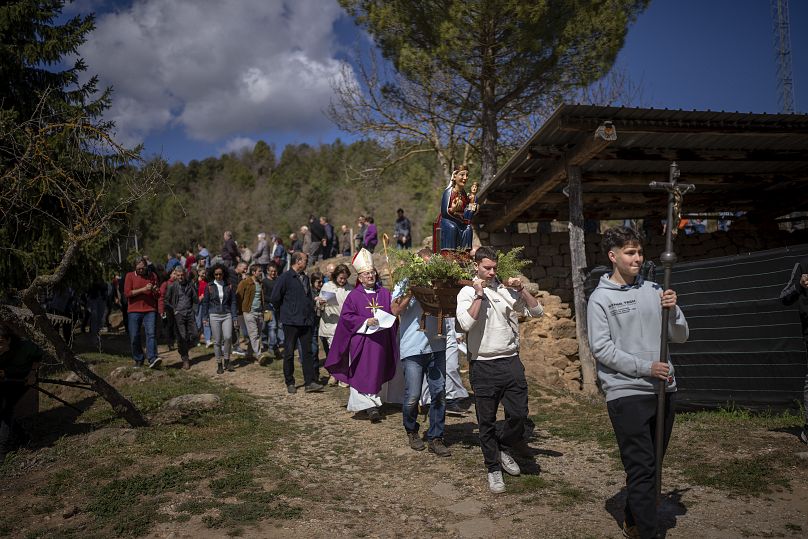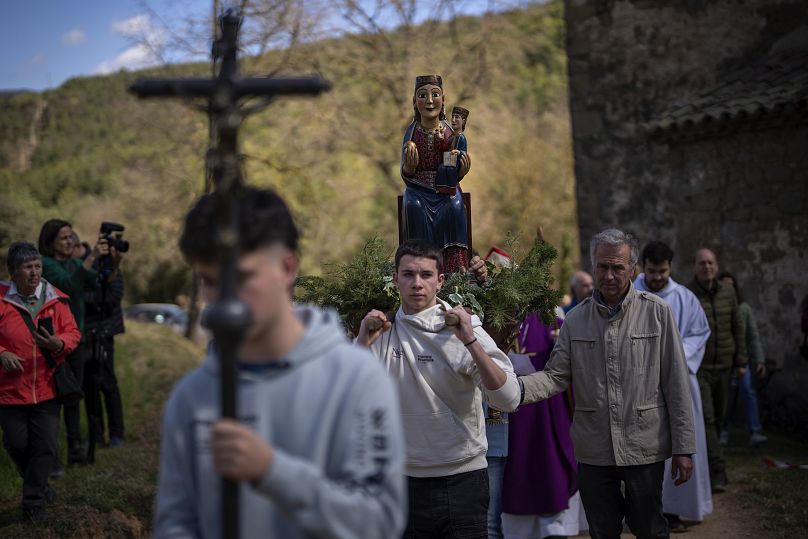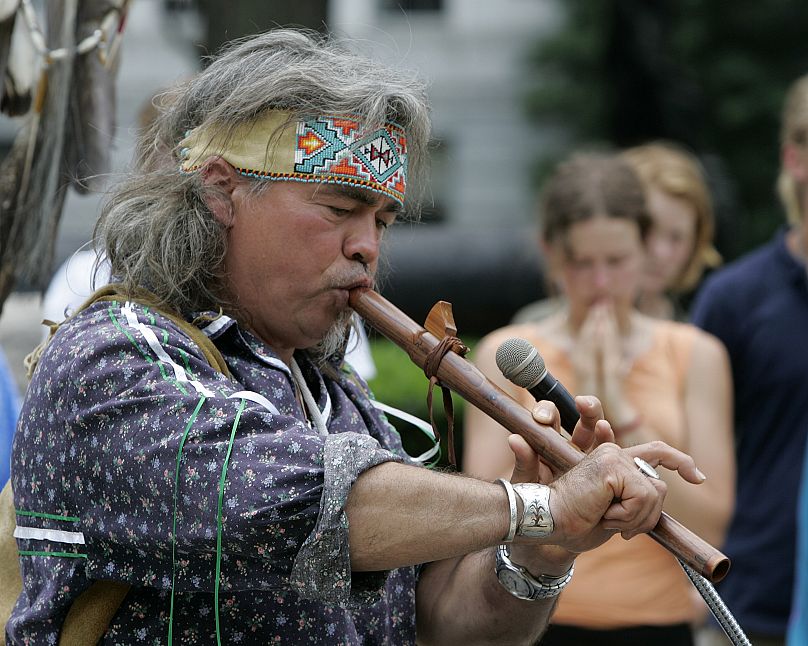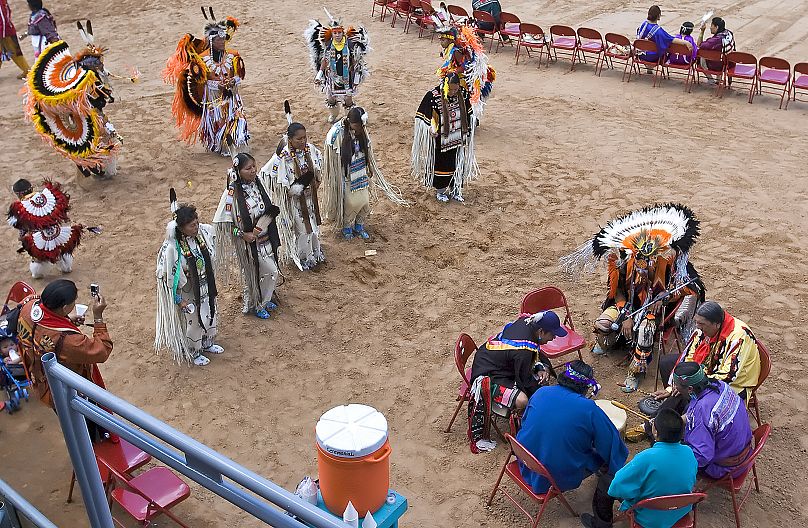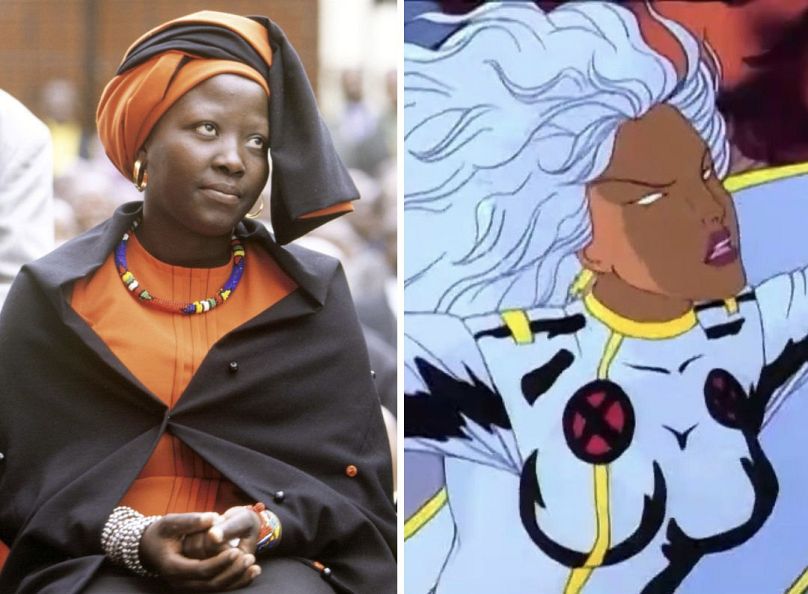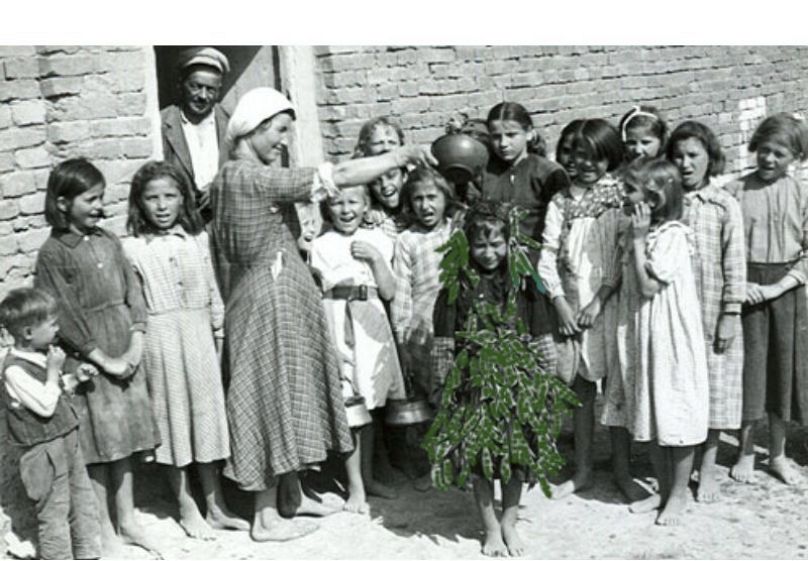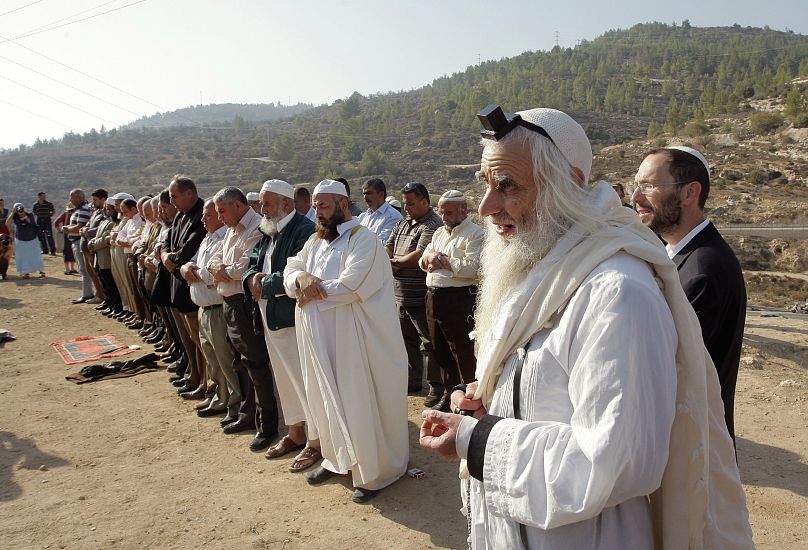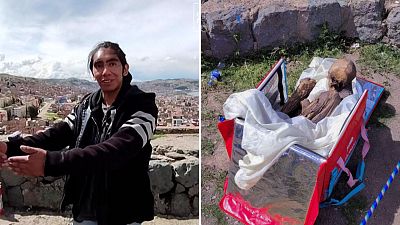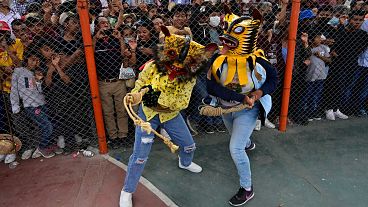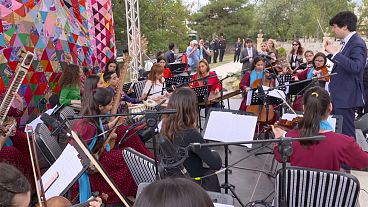While some cultures dance to invoke rain, others revere special figures. The practice of rain-making rituals and prayers goes back centuries and can be found in many different cultures and religions around the world.
A week ago, 250 farmers in a small village in drought-stricken Spain gathered together in a special Mass to pray for rainfall.
Three years of low rainfall and high temperatures have plunged the Western European country into a long-term drought which is now threatening drinking water access for six million Barcelona residents and endangering the country’s olive oil crops. Last year, Spain recorded its sixth driest year – and the hottest since 1961.
In the small mountain village of l’Espunyola, north of Barcelona, where the drought has endangered the harvest – and the only source of livelihood for the villagers – worried farmers turned to divine intervention.
The villagers brought back the faded practice of a special Mass and prayer to Our Lady of the Torrents, a local virgin associated with rainfall. They lifted the colourfully painted statue of the Lady from their stone church and carried it around the village in a wooden litter filled with branches and leaves.
“It’s not a magic act, it is an act of trust,” Bishop Francesc Conesa told The Associated Press.
The last time this special prayer was offered to Our Lady of the Torrents was in 2008 according to local media. The villagers say they were blessed with rain not long after.
But the practice of invoking God’s weatherman abilities doesn't only happen in Spain. Special “rainmaking” rituals can be found throughout many cultures. Human history is speckled with instances of masses getting together to pray for rainfall – the life supply of agrarian civilizations.
The Meditations, a series of 12 books written by Roman emperor Marcus Aurelius in the first century AD, documents a rain prayer made to Zeus – the Greek god of sky and thunder. The prayer reads, “Rain, rain, O dear Zeus, down on the plowed fields of the Athenians and on the plains,” in Koine Greek, otherwise known as “the Alexandrian dialect” or “the New Testament Greek”.
Special rituals for rain-making can be found across many cultures and religions nowadays.
The Native American Rain Dance
Native American tribes in the United States have held on to a special tradition to invoke rainfall which has been passed down through generations - rain dances.
Dressed in special costumes wearing feathers and turquoise jewels – to denote the wind and rain respectively – tribes in the dry southwestern region of the US engage in a “rain dance”. Men and women stand in separate lines and form zigzag patterns, noticeably different from most Native American dances which usually follow circular patterns.
In her book, The Rhythm of the Redman, Julia M. Buttree describes this rain dance practiced by the Zuni people (tribal name: A’shiwi) and other Pueblo Indians who have lived in modern-day Arizona, Colorado, and Utah for 1000 years. Descendants of the Zuni can still be found on a reservation in New Mexico, Arizona.
The Rain Queens of South Africa
While some cultures dance to invoke rain, others revere special figureheads with rain-making abilities.
The Balobedu people of the Limpopo Province of South Africa are known for their tradition of crowning a Rain Queen, known as “Modjadji”, who presides over the annual rainmaking ceremony in November. Rain Queens are believed to hold special powers especially the ability to control rainfall which is passed down through matrilineal lineage.
One of the manifestations of the Rain Queen’s mystical rain-making powers is reflected in the lush garden around her royal compound which contains the world’s largest Cycad trees despite being surrounded by parched land.
Rain Queens have traditionally held prominent status in South African society with national leaders paying visits to the Rain Queens even during apartheid. Nelson Mandela maintained close ties with Mokope Modjadji, the Rain Queen of his time.
And there's evidence it influenced and inspired Marvel comics too; the fictional X-men character Storm is said to be a descendant of the dynasty that produces the Rain Queens.
Balkan Rain-Making Rituals
Pagan rain-making customs known in different places as Caloian, Dodola, or Perperuna are indigenous to South Slavic countries in the Balkans (Bulgaria, Croatia, North Macedonia, Montenegro, and Serbia), as well as Albania, Greece, Hungary, and Romania.
While the rituals have different names in different places, they are very similar and usually entail singing and dancing by young boys and girls with prayers made most likely to the Slavic god, Perun, the god of thunder and weather.
These pagan rainmaking rituals survived into the 20th century and inspired British poet, Richard Berengarten, to write his long poem, In Times of Drought.
While the ritual has faded over time, indigenous inhabitants of the Sklithro village in Greece (amongst others) still practice the “Dudule dance” to this day.
The lead performer – or dudule – is usually a young orphan girl who is dressed in branches of sacred trees and carried down to the river where she dips while chanting a ritualistic song:
“Oy-dudu, oy-dudu-le
(Oh God, Dear God)
Neka vrne, neka grme
(Let it rain, let it thunder)
Neka paǵaat kapki rosa
(Let drops of dew fall)
Za da može da se rodi vinožitoto
(So that the rainbow can be born).”
Rain Prayers
Special prayers for rain are also common in the Abrahamic religions (Christianity, Judaism, and Islam). In Christianity, petitionary prayers have often been used to pray for rain.
In Judaism, the holiday of Shemini Atzeret which follows the seven-day-long festival of Sukkot includes a special prayer for rain. There are six parts to the prayer and each refers to events involving water in the lives of Abraham, Isaac, Jacob, Moses, Aaron, and the Twelve Tribes.
In Islam, the special prayer for rain known as "Salat Al-Istisqa" (the "rain request prayer), is offered in addition to the five daily prayers. Prayed in a congregation and led by the Imam of the mosque, it takes place in the same open space outside the mosque where the two Eid prayers are also held annually.
